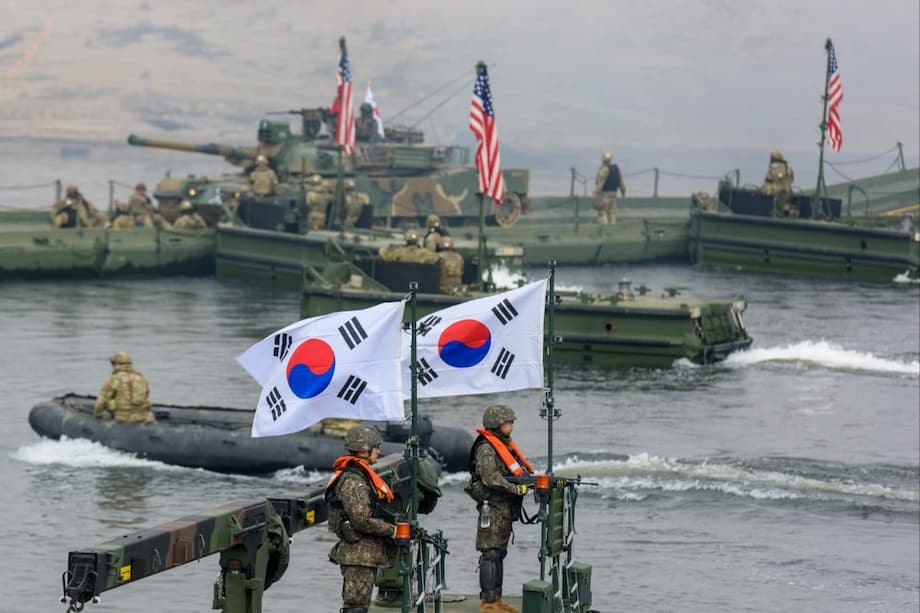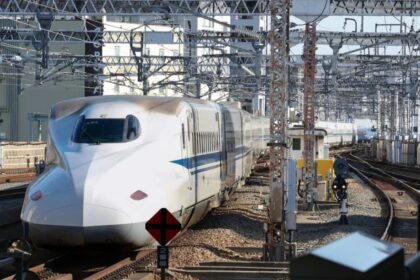South Korea’s Military Faces a Historic Decline
South Korea, long recognized for its robust military and economic prowess, is now confronting a challenge unlike any in its modern history: a dramatic decline in its military manpower. Over the past six years, the country’s armed forces have shrunk by 20%, falling from 563,000 active-duty soldiers and officers in 2019 to just 450,000 in 2025. This reduction is not the result of policy shifts or budget cuts, but rather a demographic crisis rooted in the world’s lowest fertility rate and a rapidly aging society. As the pool of young men eligible for mandatory military service dwindles, South Korea’s defense readiness and regional security posture are coming under increasing strain.
- South Korea’s Military Faces a Historic Decline
- Why Is South Korea’s Military Shrinking?
- Understanding the Demographic Crisis
- Military Implications: Readiness and Regional Security
- How Is South Korea Responding?
- Broader Societal and Economic Impacts
- Regional Security and the U.S. Alliance
- Looking Ahead: Can South Korea Reverse the Trend?
- In Summary
Why Is South Korea’s Military Shrinking?
The primary driver behind the shrinking military is South Korea’s plummeting birthrate. In 2024, the country’s fertility rate hit a record low of 0.75 children per woman—far below the replacement level of 2.1 needed to maintain a stable population. This is the lowest fertility rate in the world, and it has profound implications for every aspect of South Korean society, especially its military.
Between 2019 and 2025, the number of 20-year-old males—the typical age for conscription—dropped by 30% to just 230,000. This sharp decline is directly linked to the shrinking pool of conscription-age men, which has led to a shortfall in both enlisted soldiers and officers. The South Korean Ministry of Defense has warned that if this trend continues, the military could face operational difficulties and a growing gap in its ability to maintain defense readiness.
North Korea, by contrast, is estimated to have an active-duty military of about 1.2 million personnel, more than double South Korea’s current force. This stark disparity is raising concerns in Seoul and among its allies about the long-term balance of power on the Korean Peninsula.
Understanding the Demographic Crisis
South Korea’s demographic woes are not new, but they have accelerated in recent years. The country’s population peaked at 51.8 million in 2020 and is projected to shrink to just 36.2 million by 2072. The old-age dependency ratio—the number of elderly people supported by each working-age adult—is rising rapidly, putting additional strain on the economy and social welfare systems.
Several factors contribute to the low birthrate:
- High cost of living and housing: Young couples face steep expenses, making it difficult to afford children.
- Intense work culture: Long working hours and job insecurity discourage family formation.
- Gender inequality: Persistent disparities in the workplace and expectations around childcare deter many women from having children.
- Changing social values: Younger generations are increasingly prioritizing personal fulfillment and career over traditional family structures.
Despite government incentives and policy efforts—including plans for a new ministry dedicated to population issues—South Korea’s fertility rate continues to fall. The country’s experience is a warning for other advanced economies facing similar demographic headwinds.
Military Implications: Readiness and Regional Security
The shrinking pool of conscripts is not just a numbers problem; it has real consequences for South Korea’s defense capabilities. The military is currently 50,000 troops short of the number deemed necessary for full operational readiness, with about 21,000 of this shortfall in the non-commissioned officer ranks. This shortage threatens to undermine the country’s ability to respond to crises and maintain deterrence against North Korea.
South Korea’s defense budget remains substantial—over 61 trillion won (about $43.9 billion) in 2025, larger than the estimated size of North Korea’s entire economy. However, money alone cannot compensate for the lack of available manpower. The reduction in service periods—from 36 months after the Korean War to just 18 months today—was made possible by improved military technology and the strength of the U.S.–South Korea alliance. But as the number of eligible recruits continues to fall, even these measures may not be enough.
Comparing North and South Korea’s Military Strength
While South Korea has a technological edge and a modern defense industry, North Korea’s military remains much larger in terms of personnel. This imbalance is a growing concern for policymakers in Seoul, especially as North Korea continues to develop its nuclear and missile capabilities. The shrinking South Korean military could embolden Pyongyang or shift the strategic balance on the peninsula.
How Is South Korea Responding?
Recognizing the severity of the crisis, South Korea’s government and military are exploring a range of responses. These include:
- Expanding recruitment eligibility: Proposals have been made to mandate military service for women, who are currently exempt, and to broaden the criteria for lower-level service positions.
- Enhancing the reserve system: The number of short-term reservists has increased significantly, with hopes of creating a larger, more experienced force to supplement active-duty troops.
- Investing in technology: The Defense Innovation 4.0 plan aims to create a “slimmer yet smarter” military by leveraging artificial intelligence, autonomous vehicles, robotics, and manned-unmanned teaming. This five-year initiative seeks to offset manpower shortages with cutting-edge technology.
- Strengthening alliances: South Korea continues to deepen its defense cooperation with the United States and Japan, conducting joint exercises and developing trilateral security frameworks to enhance deterrence and interoperability.
Despite these efforts, experts warn that current measures may not be sufficient to address the immediate risks posed by the demographic decline. More targeted incentives for military conscription, broader societal changes to encourage higher birthrates, and even immigration reforms may be necessary to stabilize the situation.
Expert Perspectives and Policy Debates
Professor Chou Byung-ook of Sangmyung University estimates that the military needs to onboard about 200,000 soldiers each year to maintain current troop levels. However, projections suggest that the number of eligible conscripts will fall to just 130,000 by 2040. This gap is fueling debate over whether to introduce mandatory service for women, increase the use of reservists, or even consider selective immigration to bolster the ranks.
“The demographic crisis has propelled South Korea’s Ministry of National Defense to look for alternative solutions, by increasing compulsory service recruitments and using modern weaponry in lieu of manpower,”
explains a recent analysis by the Center for Naval Analyses (CNA).
Some policymakers argue that South Korea must fundamentally rethink its approach to national defense, moving away from a reliance on mass conscription and toward a more professional, technologically advanced force. Others caution that human resources remain essential, especially for tasks that cannot be automated or outsourced to machines.
Broader Societal and Economic Impacts
The military manpower crisis is just one facet of South Korea’s broader demographic challenges. The country’s aging population is expected to strain public finances, reduce economic growth, and increase social welfare costs. As the workforce shrinks, productivity and innovation may suffer, threatening South Korea’s status as a global economic and technological leader.
Efforts to reverse the demographic decline—such as pronatalist policies, financial incentives for parents, and improved work-life balance—have so far yielded limited results. The government is also considering immigration as a potential source of new workers and soldiers, but this remains a contentious issue in a society that has traditionally valued ethnic homogeneity.
South Korea’s experience is being closely watched by other countries facing similar demographic transitions. The challenges of maintaining economic vitality, social cohesion, and national security in the face of a shrinking and aging population are likely to become more common across the developed world in the coming decades.
Regional Security and the U.S. Alliance
The demographic crisis is also reshaping South Korea’s relationships with its allies, particularly the United States. The two countries have long maintained a close military partnership, with joint exercises and integrated defense planning. As South Korea’s manpower declines, the importance of technological interoperability, intelligence sharing, and combined operations is growing.
Recent trilateral meetings between the United States, South Korea, and Japan have focused on developing new frameworks for security cooperation, information sharing, and joint deterrence against regional threats. The U.S. has also temporarily deployed additional fighter jets to South Korea to test training effectiveness and combat capability in scenarios where manpower is limited.
“If the effects of the demographic crisis on the South Korean military do not ebb, Seoul may seek strength by continuing to build deeper defense relations with its allies and partners,”
notes the CNA report.
Looking Ahead: Can South Korea Reverse the Trend?
South Korea’s demographic and military challenges are daunting, but not insurmountable. The country’s history is marked by resilience and adaptability—from the rapid economic development of the “Miracle on the Han River” to its emergence as a global technology powerhouse. Addressing the current crisis will require a whole-of-government response, innovative policy solutions, and perhaps a new social contract that balances economic growth, social welfare, and national security.
Key questions remain:
- Can South Korea successfully transition to a smaller, more technologically advanced military without sacrificing readiness?
- Will societal attitudes shift to support higher birthrates, greater gender equality, or increased immigration?
- How will the changing balance of power on the Korean Peninsula affect regional stability and the U.S.–South Korea alliance?
As South Korea navigates these uncertainties, its experience offers important lessons for other nations grappling with the complex interplay of demographics, security, and social change.
In Summary
- South Korea’s military has shrunk by 20% in six years, primarily due to a sharp decline in the population of conscription-age males.
- The country now has about 450,000 active-duty troops, compared to North Korea’s estimated 1.2 million.
- South Korea faces the world’s lowest fertility rate, with its population projected to fall from 51.8 million in 2020 to 36.2 million by 2072.
- The military is 50,000 troops short of the number needed for full operational readiness, with significant shortages among officers.
- Government responses include expanding recruitment eligibility, enhancing the reserve system, investing in military technology, and strengthening alliances.
- Experts warn that current measures may be insufficient, and broader societal changes may be needed to address the crisis.
- The demographic challenge has implications for South Korea’s economy, social welfare, and regional security posture.
- South Korea’s experience serves as a warning and a lesson for other countries facing similar demographic transitions.












